So, after Batelle Darby on Wednesday we spent a looooong time hiking at Hocking Hills, Deep Woods on Saturday. After it rained! Nothing like a good ol muddy field trip. It was honestly a lot of fun.
Deep Woods, The Appalachian Gametophyte, and Ohio Geobotany
With the help of Jane Forsyths writings about sandstone habitats and acidophiles, we were tasked with documenting some on our trip! Without further adieu, here are some acid-loving sandstone plants!
Chestnut oak (Quercus montana)
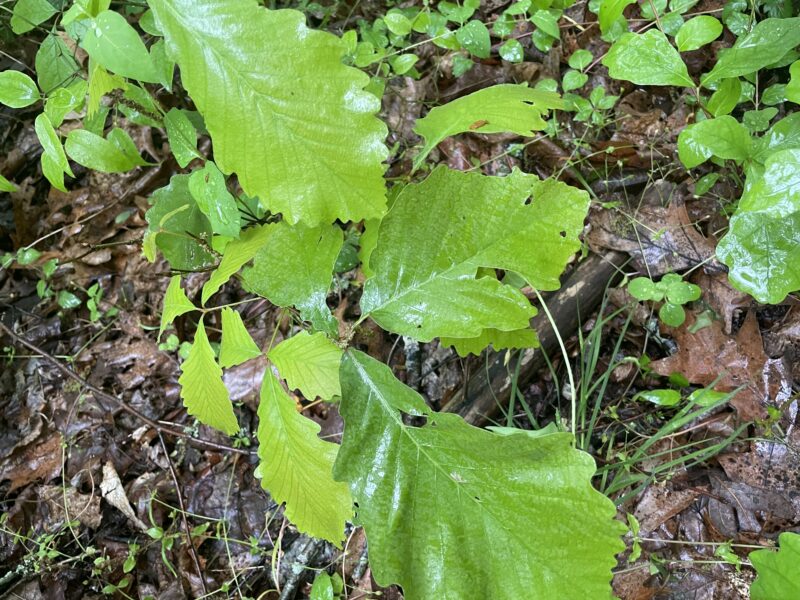
The chestnut oak prefers well-drained soils, which is why it grows so nicely in sandstone! It seems like this tree is mostly known for the durability of its wood!
Sourwood (Oxydendrum arboreum)
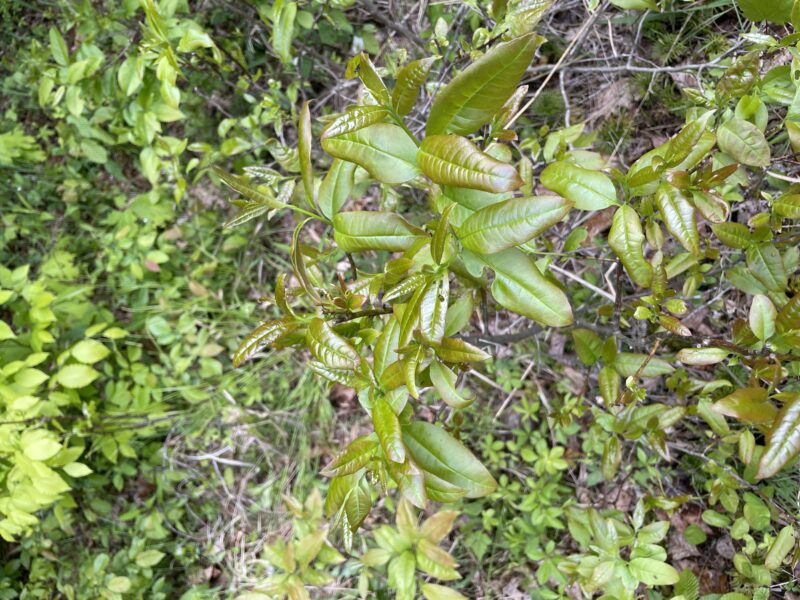
Another one of our acidophiles, the sourwood has been used for medicinal purposes. How fun! Fever as well as G.I. illnesses were treated with parts of the sourwood by pioneers. This tree produces flowers not seen here that bloom in early summer! So close!
Huckleberry-blueberry [Deerberry (Vaccinium ssp.)]
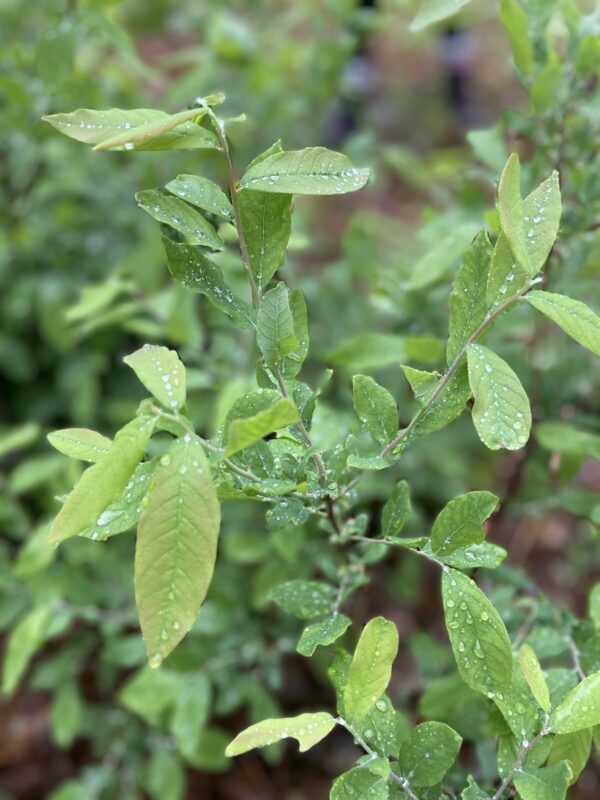
Deerberry is a shrub pretty important for wildlife. It is plentiful in North Carolina prefers well drained soils! It has alternate and simple leaves and beautiful flowers when it blooms!
Eastern Hemlock (Tsuga canadensis)
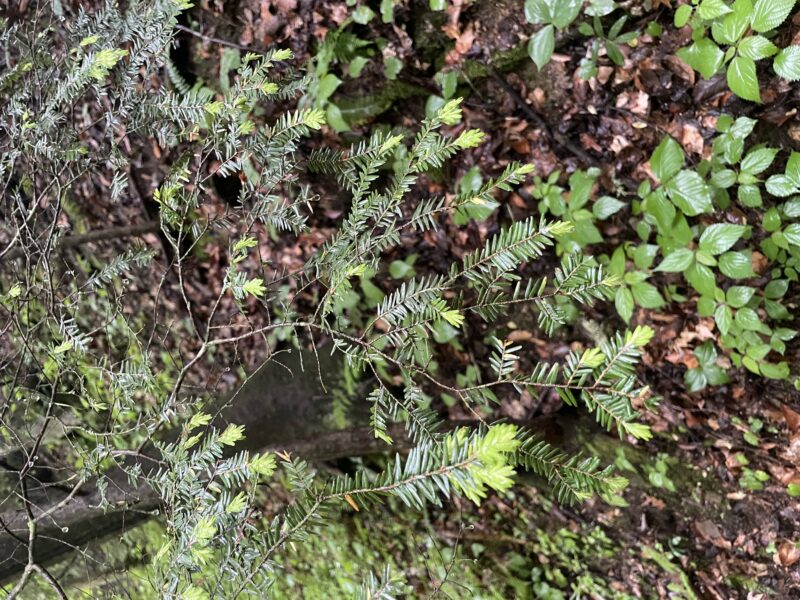
This conifer has different color needles! I think it’s so fun to walk around and know what tree you’re looking at. Now I can look at a tree such as this one and know because of the lighter tips. It prefers acidic environments and is unfortunately plagued by invasive aphids.
Whew! So much to learn in one day. On to ferns!
There are a couple things to consider with ferns: frond type, frond dissection type, and indusium. All of which will be explained shortly!
Broad Beech Fern (Thelypteris hexagonoptera)
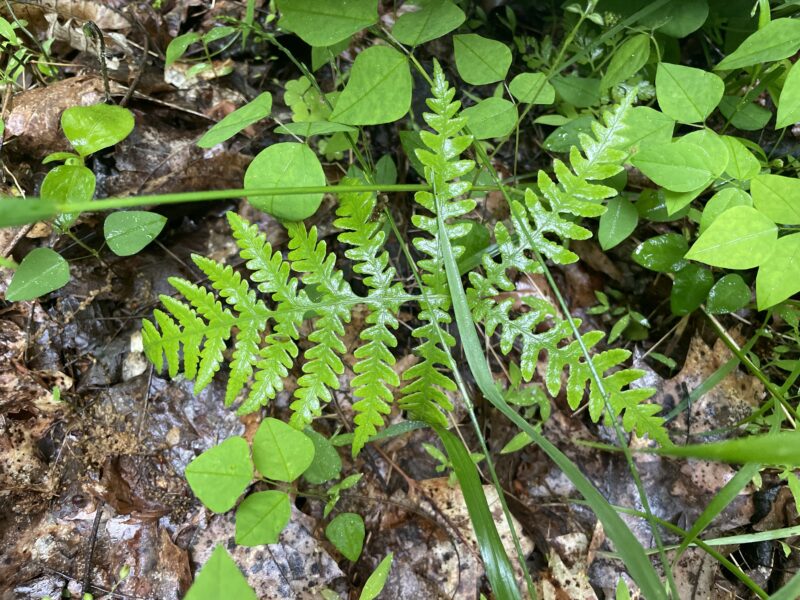
I thoroughly enjoyed our little sporophyte tour the other day. This fern is monomorphic with pinnate-pinnatifid leaves with no indusium. That’s a lot, right? Well as we can see the fern looks pretty much the same as a whole. There are no irregularities, making this one monomorphic. The pinnate pinnatifid is referring to the leaves that split off into smaller looking bumps. This will become much clearer with other ferns as well. An indusium is the pattern in which the spores are arranged, and this fern does not have one, so no worries!
Cinnamon Fern (Osmunda cinnamomea L.)
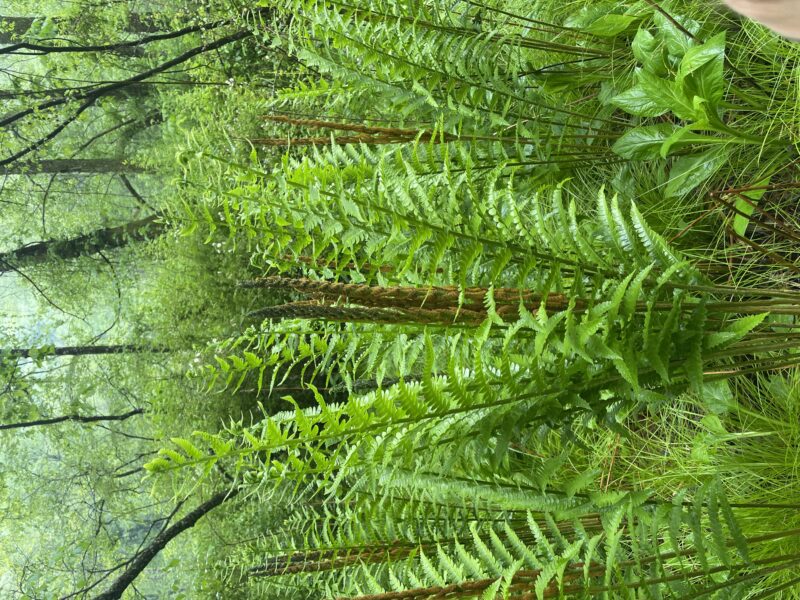
Are we beginning to see some differences? Well as we can see this fern has green-yellowish growths separated from its leafy counterparts. This is because the fern is holodimorphic! It has sterile leaves containing no spores and then fertile leaves covered in spore cases! Regarding leaves, they are also pinnate-pinnatifid like the last! There is no indusium because it has specialized fertile leaves instead!
Silvery Spleenwort (Athyrium thelypteroides)

Our friend here has bipinnate leaves, meaning that the leaves separate once, and then separate again into leaflets. To be honest, these look a little pinnate-pinnatifid, but Dr. Klips said they were bipinnate. Unless those are the same thing, I’m just a student here. They have an arching indusium and monomorphic frond type. Solid!
Maidenhair fern (Adiantum pedatum)
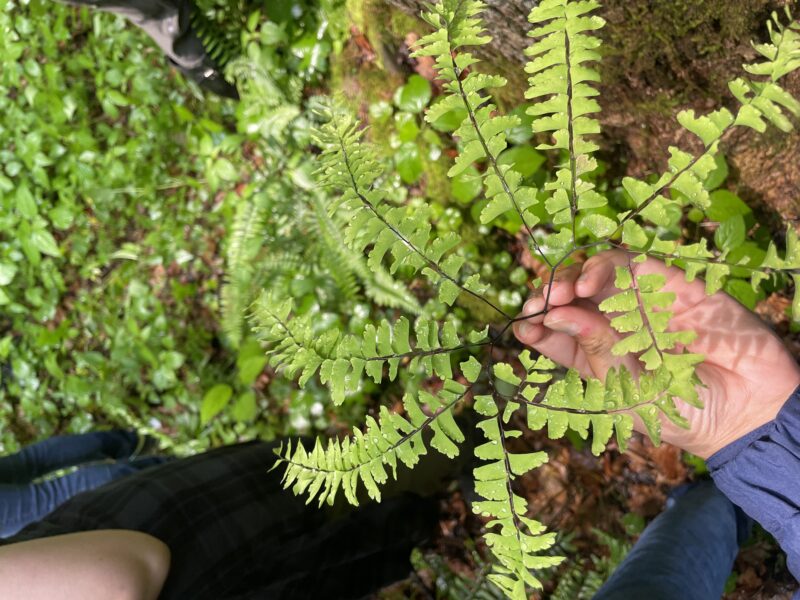
The name is quite fitting! This fern is whorled with pinnate leaves and monomorphic with a false indusium, meaning the leaves curl over the sori! My hand is holding up one branch or stem of it! For some reason it reminds me of a dress, not sure why.
I feel a little bad for now sharing a hemidimorphic fern, so I’ll include an image here!
Royal fern (Osmunda regalis)
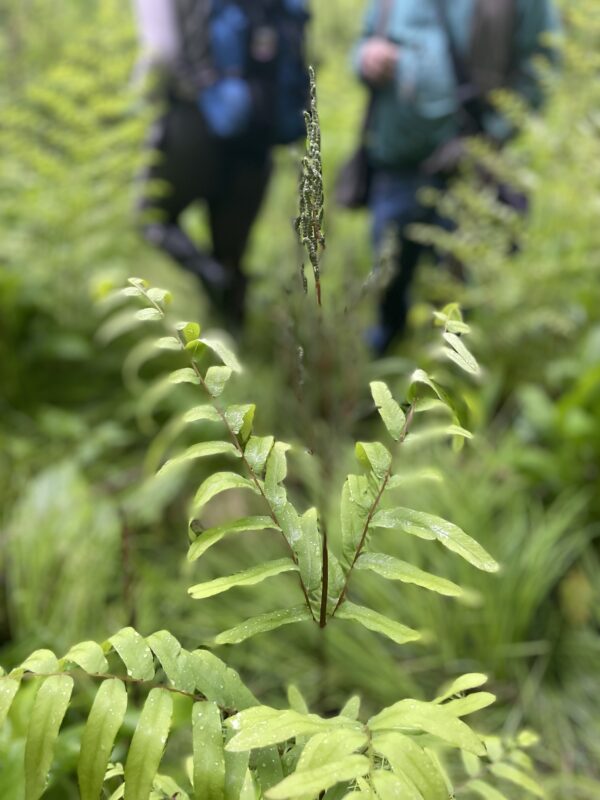
As we can see, hemi (half)! There are sterile leaves leading up to the fertile ones! Now you know~
With all of these ferns here, we are looking at the sporophyte for the most part. So what if there were a species of fern with the primary identifier being the gametophyte? Oh! There is one!!
Our example of a fern without a sporophyte is Vittaria appalachiana or, the Appalachian Gametophyte! It is super cool because usually the gametophytes are very miniscule on the sporophyte, but those rednecks just had to be special right? The gametophyte is one of the only species of fern without a sporophyte which is usually the first identifying quality of a fern. Unique!
The spores of ferns are much smaller than gemmae which are cells surrounding the plant, and pretty much break off as a clone and grow to form a separate plant. As you can imagine, a larger cell probably has less air time than a smaller spore, meaning dispersal is limited. The more likely measures of spread would be by water, animals, or the wind (Pinson 2016). A study by Kimmer and Young evaluated gemmae dispersal by slugs!
Another intriguing factor about the gametophyte is how it came to be the way it is. It is viable in some habitats and nowhere to be seen in habitats that have similar features. So, it is hypothesized that the gametophyte had a functioning sporophyte before the last ice age, which is also supported by a lack of the gametophyte North of the glacial barrier!
There was considerable effort performed to determine whether the gametophyte is/was being sustained by a relative, or tropical source. However, it was disproven comparing chromosomal differences with its closest relative, V. graminifolia. The most sensible explanation for the Appalachian gametophyte is the extinction of its sporophytes following the last ice age!
On to the dreaded invasive plants 🙁 . At least you know where to pluck now!
Multiflora rose (Rosa multiflora)

Some folks sure are aggressive about invasive species. Understandably so, but I had never seen a procedure on how to remove them before. This is a shrub of the rose family, originating in Asia. There are no natural enemies or predators to this plant, so I guess it’s up to us! I did not see many on our deep woods trip, but perhaps they take care of it there! The amount of control methods from uprooting, clipping and chemical methods is intense! Why do invasive species have to be so nice to look at ?
Japanese stilt grass (Microstegium vimineum)
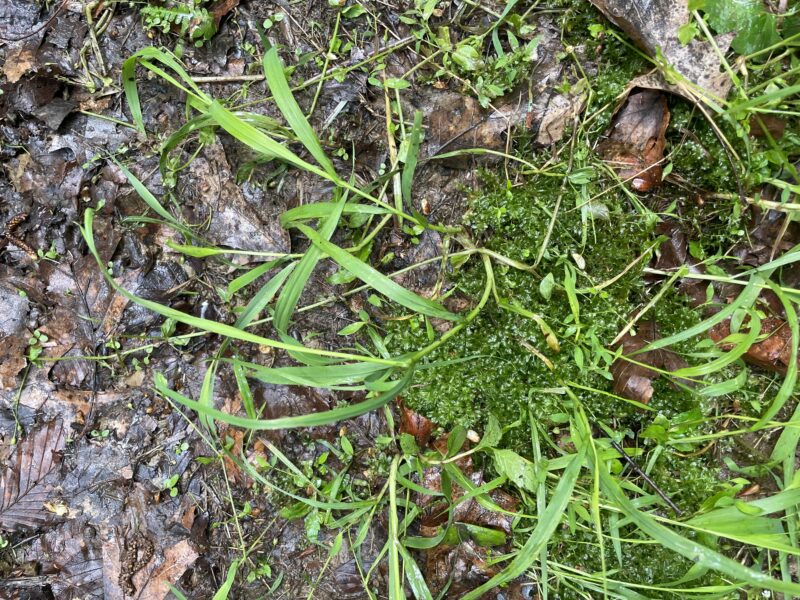
So this is obviously a less enjoyable plant to look at, and if walking over it wasn’t enough we can always boo and hiss. It’s of asian origin and was guessed to have been brought shipping porcelain. I guess this plant is so plentiful that the seeds can stay in the soil for five years! That’s pretty wild. It is also pretty effective at being invasive (shocker) so this one definitely needs to kick rocks! Luckily with herbicides it can!
Information from:
https://bplant.org/plant/188
https://www.arborday.org/trees/treeguide/treedetail.cfm?itemID=921
https://www.ecolandscaping.org/07/landscape-challenges/invasive-plants/multiflora-rose-an-exotic-invasive-plant-fact-sheet/
https://nyis.info/invasive_species/japanese-stiltgrass/#:~:text=Japanese%20stiltgrass%20is%20an%20annual,a%20packing%20material%20for%20porcelain.
